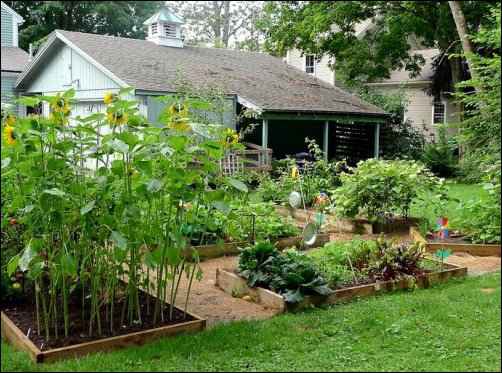Embarking on the journey of creating a homestead is an exciting yet challenging endeavor. When we talk about a 15 acre homestead, the possibilities seem endless, but that’s where zone planning becomes crucial. In this guide, we will delve into how you can effectively plan and optimize your homestead so that every inch of your land is put to good use. Whether you’re a seasoned farmer or a beginner dreaming of rural life, understanding zone planning can make your 15-acre dream both sustainable and productive.
The concept of zone planning involves dividing your land into different areas or zones, each with its specific function. This method not only helps in efficient land use but also ensures that your homestead is sustainable and self-sufficient. As you embark on this planning journey, remember that every decision you make should align with your long-term vision for your 15 acre homestead.

Understanding Zone Planning
Zone planning is a strategic method used to manage land by segmenting it into zones. Each zone serves a distinct purpose, and it’s designed to optimize the use of resources, minimize waste, and maximize productivity. For a 15 acre homestead, this means organizing your land in a way that every zone complements the other.
The Importance of Zone Planning
Why is zone planning important for a 15 acre homestead? The answer lies in efficiency and sustainability. By carefully planning each zone, you ensure that your homestead functions smoothly, with each part supporting the other. This interconnected system reduces labor, time, and resources needed, allowing you to focus on what’s most important: living a fulfilling and sustainable life.
Breaking Down the Zones
Zone 1: Home and Immediate Surroundings
This is the heart of your homestead, where you spend most of your time. It includes your home, outdoor living spaces, vegetable gardens, and small livestock pens. The goal is to make this zone easily accessible and manageable, as it requires daily attention.
Zone 2: Orchards and Larger Livestock Areas
Zone 2 is slightly further out and includes orchards, larger vegetable plots, and areas for larger livestock. This zone is visited less frequently but still plays a critical role in providing food and resources for your homestead.
Zone 3: Fields and Pasture
This zone is dedicated to crops and pasture for grazing animals. It’s not visited daily, but it requires regular maintenance and is vital for the sustainability of your 15 acre homestead.
Zone 4: Woodlands and Wildlife Habitats
Zone 4 is a semi-wild area, providing wood, wild food, and a habitat for wildlife. It’s essential for biodiversity and can serve as a buffer for your more cultivated zones.
Zone 5: Wilderness and Conservation
This zone is left in its natural state, serving as a conservation area. It’s usually untouched, allowing nature to thrive and providing a sanctuary for wildlife.
Implementing Zone Planning
Implementing zone planning on your 15 acre homestead requires careful consideration of your land’s natural features, climate, and your family’s needs. Start by sketching a map of your property, noting existing features such as water sources, soil types, and natural vegetation. From there, you can begin to overlay your zones, considering how each area will be used and how it will interact with the others.
Designing for Efficiency
Efficiency is key in zone planning. Consider the placement of pathways, water systems, and renewable energy sources like solar panels. For instance, check out solar power tips for homesteads, which can greatly enhance the energy efficiency of your 15 acre homestead.
Embracing Sustainable Practices
Sustainability should be at the core of your zone planning. Incorporate practices such as waste reduction and sustainable living to ensure that your homestead is not only productive but also environmentally friendly.
Adaptation and Flexibility
Remember, your zone plan is not set in stone. As your family grows and your needs change, your zone planning should adapt. Regularly review and adjust your plan to accommodate new challenges and opportunities.
Challenges and Solutions
Creating a 15 acre homestead comes with its challenges, from unpredictable weather to pest management. It’s important to anticipate these challenges and have solutions in place. For instance, consider livestock care strategies that accommodate seasonal changes and enhance animal welfare.
Community and Resources
Don’t hesitate to reach out to local homesteading communities for advice and support. Online forums and social media groups can provide valuable insights and resources to help you succeed. Additionally, explore external resources like homestead layout ideas for more inspiration.
Conclusion
Zone planning for a 15 acre homestead is a powerful tool that can transform your dream into reality. By understanding and implementing strategic land use, you create a productive, sustainable, and fulfilling homestead. As you embark on this journey, remember that every decision you make should be guided by your vision for a harmonious and thriving homestead.

FAQs
What is zone planning?
Zone planning is a method of organizing a homestead into different areas or zones, each with a specific function, to optimize efficiency and sustainability.
How do I start zone planning?
Begin by assessing your land’s natural features, sketching a map, and dividing your property into zones based on their intended use and interaction.
Can zone planning be adjusted over time?
Yes, zone planning is flexible and should be reviewed and adjusted as your family’s needs and circumstances change.





